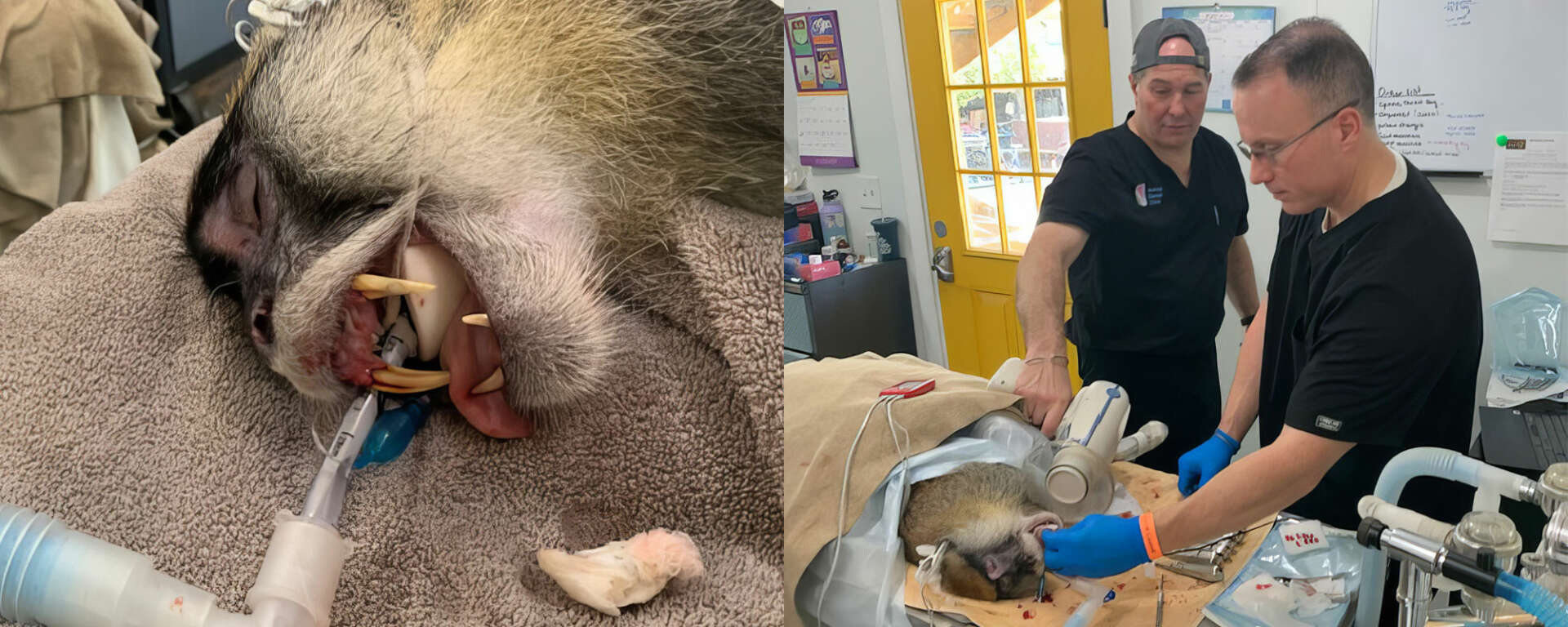Nonprofit veterinary dentists visit Safari West!
Posted in: Conservation, Goings on
Learn about the team of veterinary dentists that visited Safari West to provide dental care for our male Patas Monkey Maurice, as well as a few other animals!

One of the many things I have learned from our veterinarian, Dr. Emily Cehrs, is that good veterinary practices include proactive care as well as reactive care. Animals can be very good at hiding discomfort, as showing weakness in the wild could make them a target for predators. But, when a problem is caught earlier, treatment is often easier and more successful. So, how can animal care staff catch any potential issues as early as possible? One way is through careful observations by our caregivers, who assess the health of each individual every day, and are trained to notice small differences in an animal’s behavior. Our tour guides also spend enough time around the animals here that they may notice something and notify our animal department. But, even with all of this visual observation, some issues do not outwardly present themselves in an obvious way. The same is true for humans—this is why it is recommended to go to the doctor for a general health check every once and a while! Dr. Cehrs takes the same proactive approach with the animals at Safari West, administering preventative health exams as often as once a year for as many animals as possible. These health exams can include x-rays, ultrasounds, blood work, and anything else needed to make sure each animal is in good health. I also learned a fun new word that is used to describe this preventative care: “prophylaxis”!
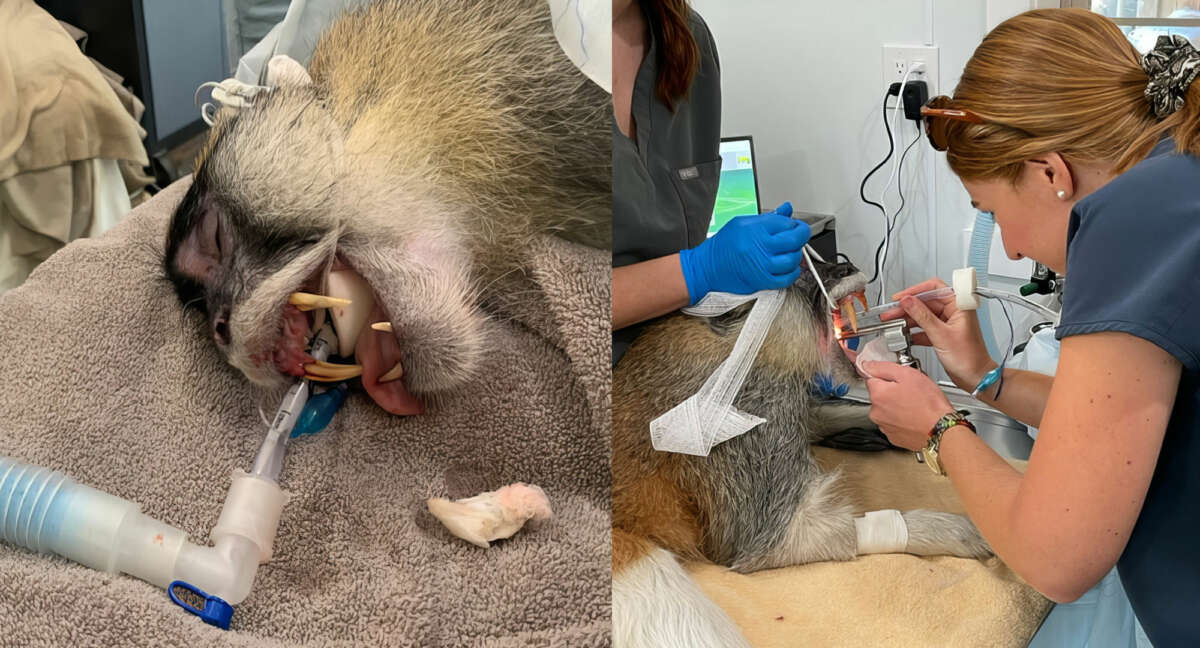
At the beginning of July, Dr. Cehrs performed a preventative health exam on our adult male patas monkey, Maurice. Along with all of the standard health checks, which Maurice passed with flying colors, a dental exam and cleaning was performed. During this exam, Dr. Cehrs found that a few teeth were not in the best condition. This is not uncommon in nonhuman primates under human care—most monkeys have no desire to allow their caregivers to brush their teeth every day, so the time that a monkey is sedated for a health check or other procedure is often the only opportunity for checking and cleaning teeth. Dr. Cehrs found that a few of Maurice’s incisors were in poor condition, and there was a hole in his upper left canine. Incisor teeth in this species are quite small and could be removed without affecting Maurice too much, but there is more risk associated with removing a larger tooth like a canine. It was decided that a root canal may be necessary to save Maurice’s canine tooth.
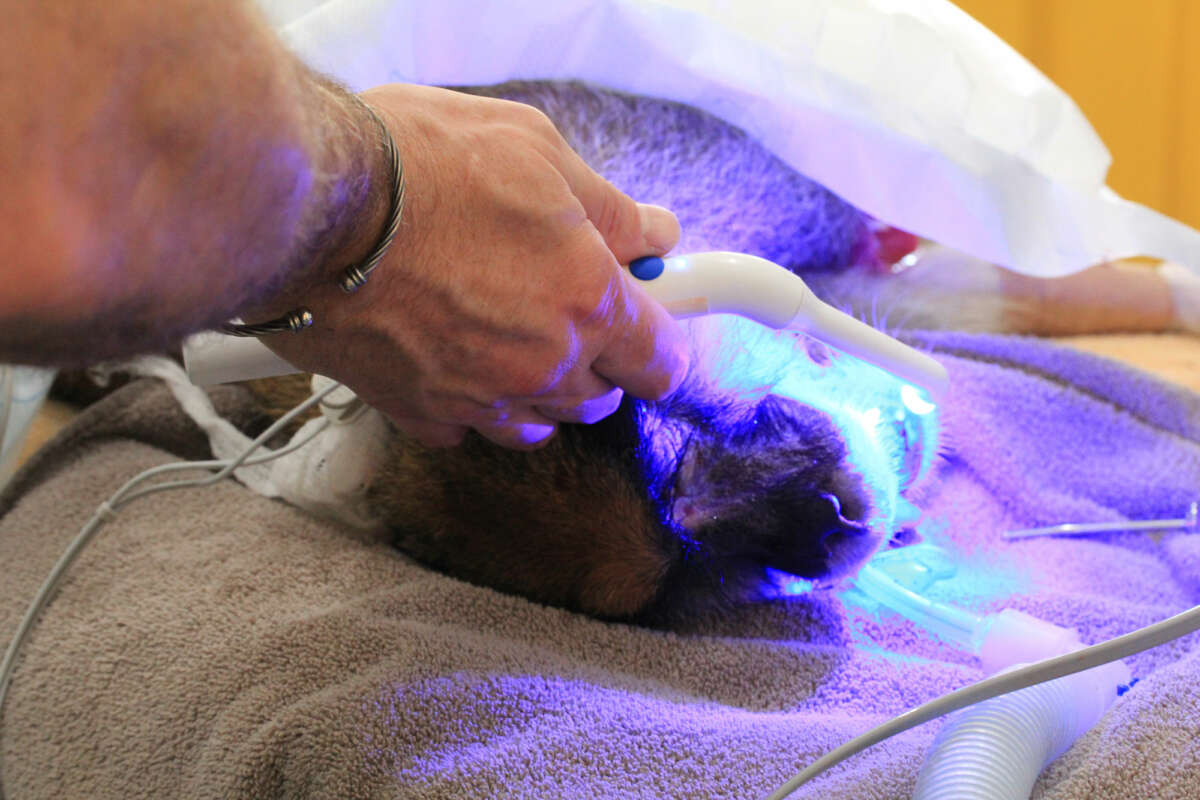
Dr. Cehrs reached out to other zoo veterinarian colleagues to ask if anyone knew a veterinary dentist that would be able to do this work on Maurice. The peers she talked to recommended the Peter Emily International Veterinary Dentistry Foundation. Dr. Cehrs reached out to this organization, and they got back right away saying they could help!
The Peter Emily International Veterinary Dentistry Foundation is a nonprofit dedicated to providing advanced veterinary dental care to exotic animals under human care around the world. Many of their practitioners volunteer their time, working full time jobs in the field of dentistry and traveling for additional nonprofit dentistry work on the weekends. These dentists often travel in pairs: a human-focused dentist typically has more experience performing specialized dental procedures, while an animal-focused veterinarian is more familiar with the wide variety of dental anatomy seen across the animal kingdom, resulting in the perfect combination of knowledge to take on any dental dilemma. The best part: this work is all funded through donations, and is provided to facilities free of charge!

On a Saturday in August, Dr. Baron Hall and Dr. Charles Dyer from the Peter Emily Foundation joined us at Safari West. They quickly got to work, taking a full set of mouth x-rays on Maurice. The x-rays showed that while the hole in his canine was deep, it was not affecting the nerve of the tooth. This meant that he could get a filling instead of a root canal! The team quickly did the filling, as well as taking out all of the problem incisors and cleaning his teeth. Everything ran very smoothly, and Maurice was in and out in under 45 minutes! He has since made a full recovery.
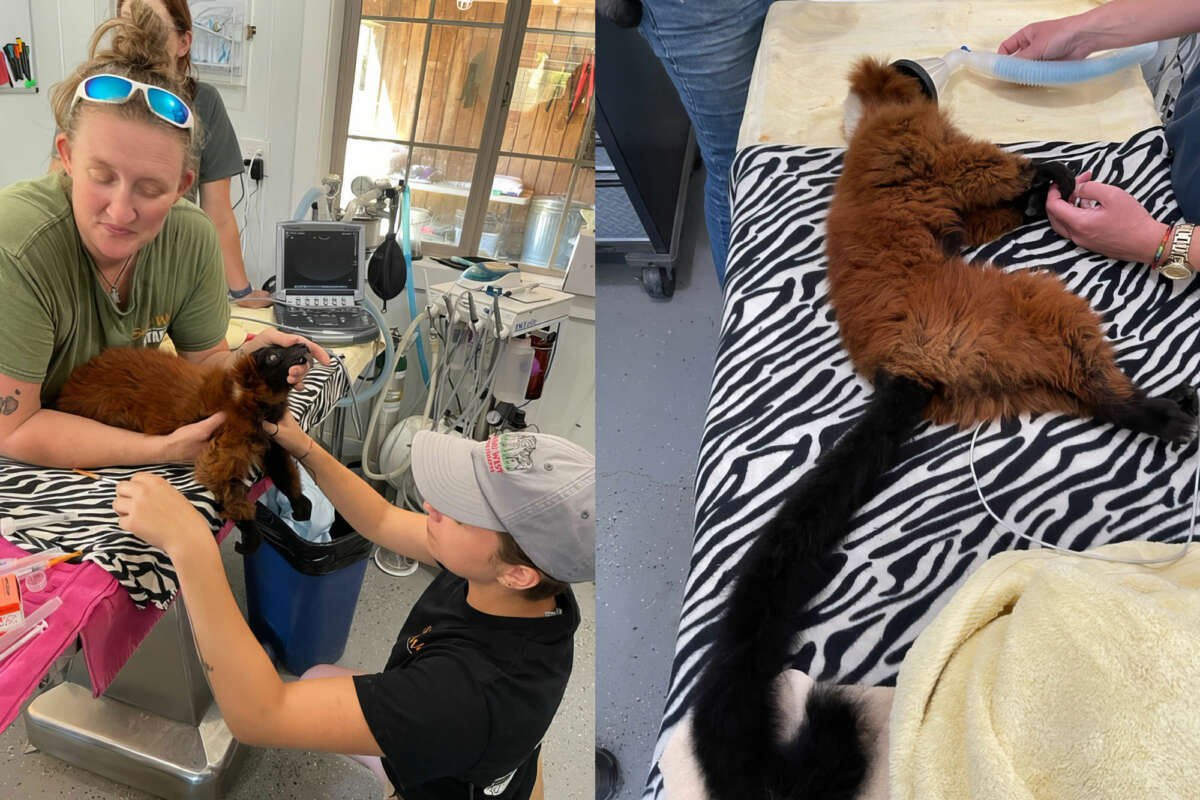
After Maurice’s work was complete, there was still plenty of time left in the morning, and the team of dental specialists asked if we had any other work they could do! We were happy to oblige. Next up was a red-ruffed lemur with a canine at an odd angle. Full mouth x-rays were taken on this individual as well, and it was determined that this avulsed tooth was not causing any major issues. There would be more risk associated with removing a tooth like this, so the team decided that this canine didn’t need to be removed.
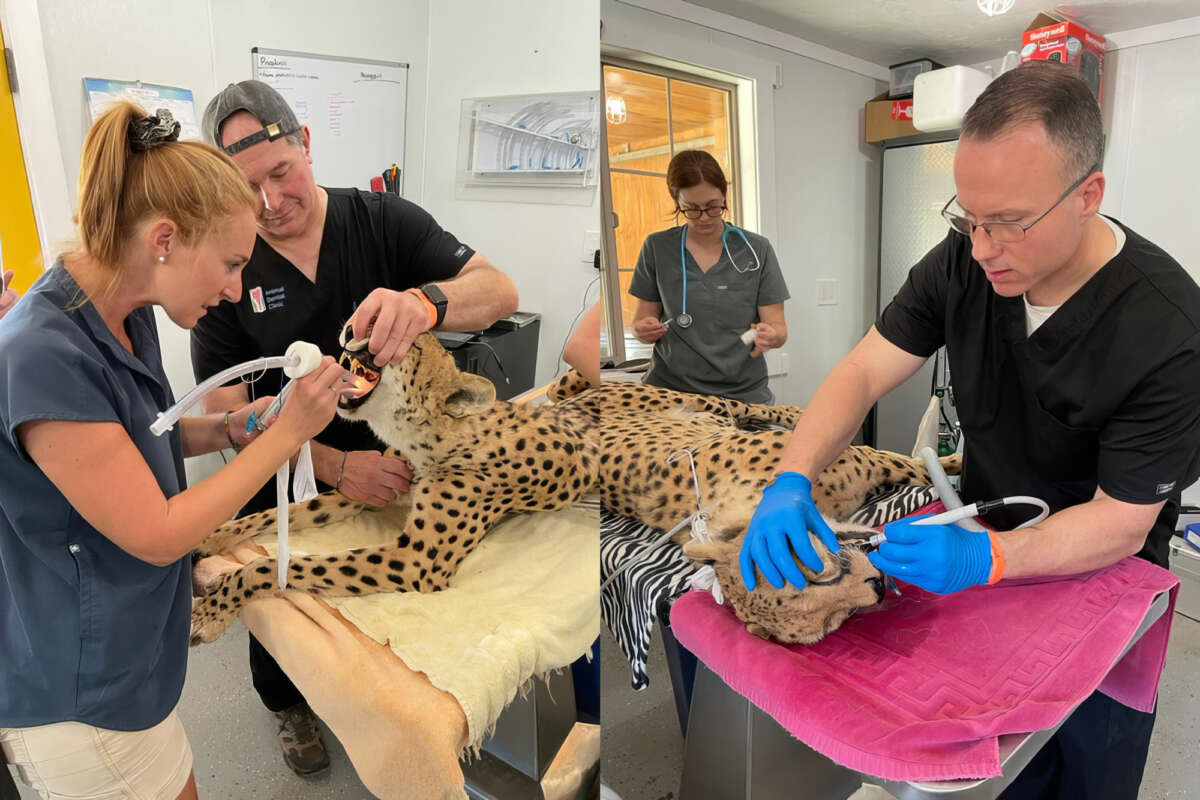
The dental team still had lots of time, so we brought in one more pair of patients: our two cheetah brothers, Jafar and Jamir. The cheetah boys both received full mouth x-rays, dental exams, and had their teeth cleaned. Dr. Cehrs also took the opportunity to do the rest of both of their preventative health exams! Once both cheetahs left the vet clinic with a clean bill of health, the team finally called it a day. One monkey, one lemur, and two cheetahs—not bad for a morning of dental work!
We want to express our deep gratitude to the Peter Emily Foundation for the excellent specialized dental work they helped us with. Exotic veterinary dentistry is such a niche field that most smaller animal care facilities would have a hard time finding the help they need, so it feels good knowing that an organization exists to meet that need, free of charge. Safari West has contributed to the ongoing success of the Peter Emily Foundation, and we hope you consider doing the same.
Learn more about the Peter Emily Foundation and donate at:
https://peteremilyfoundation.org/
Most photos by Laura Cunningham.
